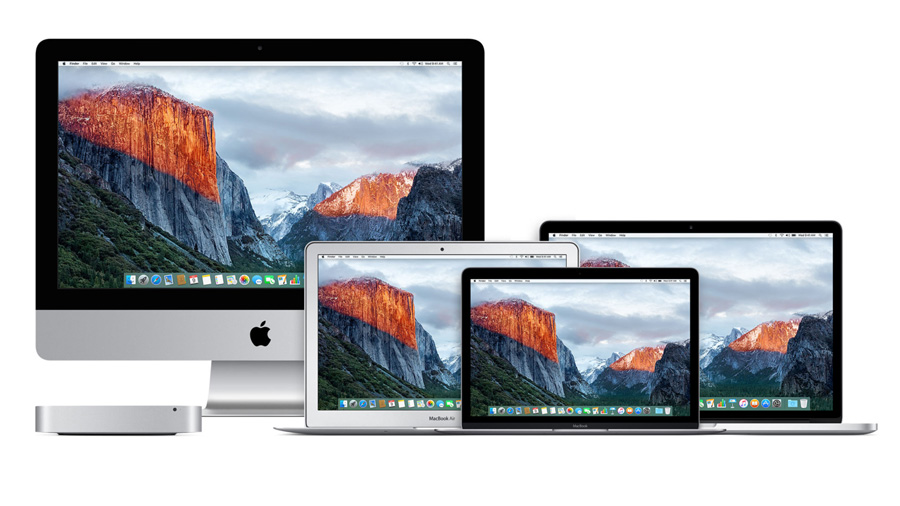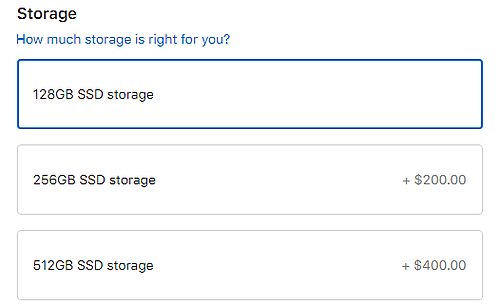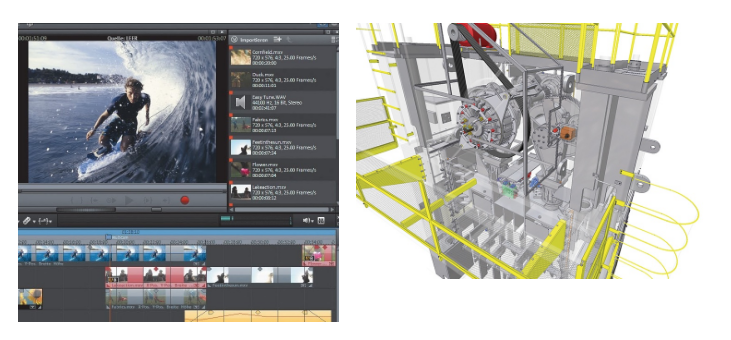One of the situations we see far too often these days is when a user runs out of storage for their data. With Macs and PCs, storage is definitely on a higher scale from many other devices out there, but many of the problems are the same – too many programs or too much data can quickly fill any storage you may have on your computer. Just as many underestimate how much data they can accumulate in a couple years with a smartphone, many underestimate how much can be accumulated over the life of their computer, which in some cases can go beyond a decade. Although most will never make it to that ten year mark, most systems are kept for several years anyway, and thus the storage needs can far exceed even the most extreme cases elsewhere. You can avoid this problem by choosing the right amount of storage for your digital needs.

The most common group of users to encounter this barrier are definitely the Mac users out there. Especially with how tightly focused many art schools, musicians, and graphics design careers are on the Mac ecosystem, their users, on average, store a great deal of their music, photos, and other media on their Macs – whether for work or personal use.
The problem is exacerbated further by the most common Mac configurations, namely the MacBook line, having relatively small hard drive capacities. The reason for this is that the types of storage many Macs and premium PCs use is much faster and delivers a much more snappy experience, at the cost of being more expensive than their more standard counterparts for a given amount of space. The base model MacBooks frequently have only 128 GB of storage available, and that’s what most people go with without a second thought, as it is the most inexpensive option. While this may sound like a lot, especially when compared to the smartphones we carry with us everyday, it’s important to consider the fact that, on average, many of these Macs are not only far more expensive than their smartphone counterparts, but their users also tend to keep them far longer, as previously mentioned. That’s to say nothing of the fact that many Mac users store complete backups of their entire iPhone’s content on their Macs, in addition to everything else. When you take that factor in by itself, you can see why this amount of space may prove to be insufficient rather quickly.
With PCs, the lines aren’t so clear-cut. With how many different manufacturers there are out there, each producing multiple lineups of different types of Windows-based devices, the narrative tends to break down a little. Many desktop computers and laptops, especially in the lower and middle-range, tend to come with a whole 1 Terabyte of storage as standard. This is far more than most people really need, but is the most cost effective option for a lot of manufacturers. Paradoxically, as you get into price ranges closer to the high-end, and more in line with what you might pay for a Mac, the storage starts to decrease in many models, especially the thin-and-light laptops people are so fond of these days. As mentioned in the case of the MacBooks, this more expensive form of storage starts to become much more common in the higher-end systems available. These types of drives, called Solid State Drives, are much faster and more durable than their classic Disk Drive predecessors – even many older systems can see a huge boost in speed and responsiveness with this type of drive under the hood. However, the price tradeoff is again apparant – every step up in storage will typically run users a good deal of money, thus discouraging people to go any higher than the most inexpensive option.
In our experiences over the years, we tend to see a few situations that stand out most commonly, with the bulk of people falling into three distinct scenarios…
One of the most common cases is, of course, the people who mainly use their computer for web browsing and email. For those that do most of their work online, keeping only minimal collections of documents, pictures, or other files on the computer itself, the storage needs are pretty minimal. With the proliferation of video streaming services such as Youtube, Netflix, and Hulu – or just as commonly, music streaming services like Spotify, Pandora, Apple Music, and Google Play Music, many who do most of their work online can get most of their entertainment online as well. Users who fit this bill can expect to need very little storage on their systems, and often even the smallest options will be more than sufficient. An entire class of computer has been built around this scenario, the most well known of which being Google’s Chromebooks – a type of computer that is most often cheap, fast, and lightweight, with minimal storage options that instead rely on the cloud and internet services such as Google Docs to do most of the heavy lifting.
This next case usually encompasses those who store large collections of data on their computers. Be it pictures or videos, music or documents, they are often rather similar to those in the above scenario in terms of how they use their computers from day to day. However, there will often be times in which they might find themselves storing or editing pictures from their cameras or smartphones, or perhaps even dabbling in video editing. Those of us who fit this category will want to invest in the larger storage options available, depending on the computer in question. While the average photo only takes up a tiny fraction of the space on your system, over the course of years (or even decades!) it can be very easy to build up a collection of tens or even hundreds of thousands of photos or other important files. With most systems coming with a 1 Terabyte drive, you’re guaranteed to get a good deal of mileage for your needs. Although, depending on how much you have, you may need even more space over time. Of course, if you’re looking at a Mac or higher-end PC with more limited capacity drives, you should definitely opt for some of the larger options, despite the extra cost, since more storage can easily make the difference in the computer’s viability for the future.
For some people, their computer essentially IS their job, for all intents and purposes – their livelihood and all their work is done through it, and all their files and documentation are exclusively stored there. This is especially true for those in a career in (or going to school for) design or creative fields such as photography, cinema, 3D modelling, or manufacturing. The software for this type of work is usually quite expansive on its own, and many of the files users will work with daily will be quite large. Between RAW photos and high-resolution video, or complex 3D models and textures, even shorter projects can take up a great deal of space. This doesn’t just apply to the professionals in these fields either; very often, even hobbyists and amateurs will encounter problems with not having enough space for their passion. Even when it comes to more casual usage, modern video games can take up a lot of space, too – some modern titles encompass more than 50 Gigabytes a piece. If any of this sounds like you, you’re best advised to go with the largest options available to you. You may even want to consider external forms of storage such as the Cloud or external hard drives. For a relatively modest fee, you can expand the space available to you dramatically.
Beyond just providing more storage, both the Cloud and external hard drives can provide an exceptionally important quality – backup. Especially for the latter cases, having a backup of your data is paramount. Computers can break, hard drives can die, and certain malware can even take your files hostage and hold them for ransom. Even if it has never happened to you before, it can happen to anyone – and in the case of the first two problems, it will happen eventually.
Whatever your situation may be, choosing the right amount of storage for your computer can be more significant than any other detail in a new purchase. It’s important to remember that the computer is a tool, and it’s what that tool is used to do and create that is the most important. Of course, if you’r ever unsure of your needs or are simply looking for some advice, feel free to talk to us at RGB Computer Solutions.






